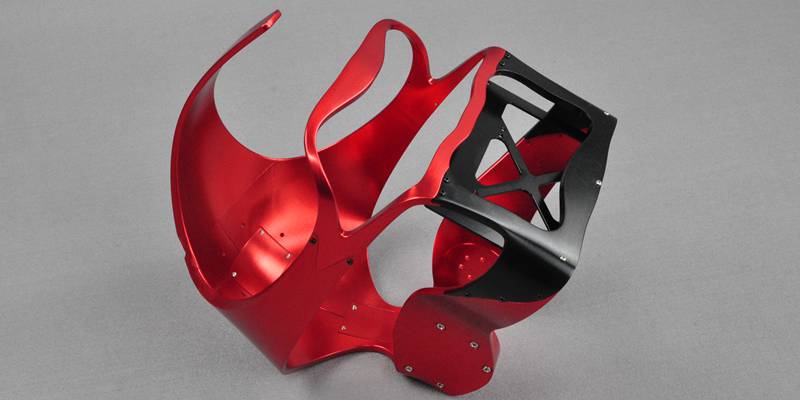- October 28, 2022
3D printing is redefining the notion and capabilities of manufacturing. This emerging trend is giving tough competition to conventional manufacturing methods. One of the reasons for its rapid success is the impressive 3D printing surface finish, which we will be reviewing in depth in this article.
Therefore, the discussion will center on 3D printing finish, the factors that affect it, its measurement methods, and the various techniques to improve surface finish. Stick with us for a comprehensive guide on this topic.
What is Surface Finish in 3D Printing?
First, let us begin with an introduction to the concept of 3D printing surface finish. Simply put, it is a qualitative measure of how rough a part’s surface is after printing. A very smooth surface is considered ‘fine’ while a rough surface has a ‘poor’ surface finish.
It is a crucial step in any manufacturing process as there are strict surface quality requirements for almost every product. A sheet of paper, for instance, fails to serve its purpose if it is too coarse to write upon and will not do well in the market.
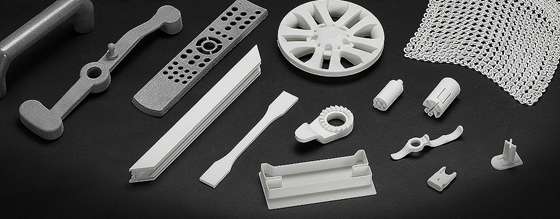
Thus, achieving the desired surface finish is a top priority for 3D printing manufacturers. Oftentimes, this is a post-processing job involving numerous techniques, which will be discussed soon.
In addition, finishing 3D printed parts presents a unique challenge due to the inherent qualities of additive manufacturing processes. As parts are built layer by layer, their surface is composed of a repetitive pattern of ridges and valleys that must be flattened out while respecting the part’s integrity.
Why is 3D Printing Finishing Important?
There are several reasons for setting specific targets for 3D printing surface finish. These reasons can be both superficial and functional. Below is a summarized list of various such reasons.
1. Aesthetics
A good surface finish adds to the part’s aesthetic value. This includes elements of appearance such as color, texture, and ruggedness (shiny/matte).
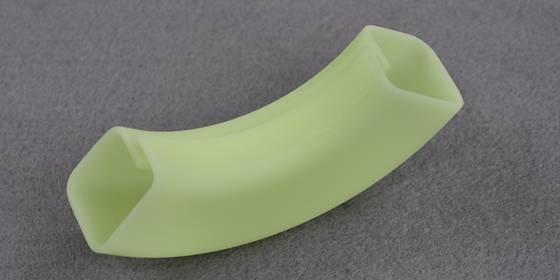
2. Mechanical & Chemical Properties
Surface finishing methods can enhance the performance of 3D printed parts. Metallic parts, for example, can be coated to make them corrosion-resistant and electrically conductive. Some methods induce resistance to high temperatures and wear for parts meant for tough and demanding applications.
3. Functionality
Certain applications require a specific surface finish to work properly. An interference fit, for example, depends heavily on the surface quality of mating parts. Thus, in other cases, a rough surface might be preferred to improve the surface area for effective heat transfer.
4. Manufacturing Tolerance
Surface treatments are quite often used in 3D printing finishing to bring a part within its dimensional tolerance limits. So, extra material may be removed or more material may be added for this purpose.
Which Factors Affect Surface Finish in 3D Printing?
3D printing is a complex process with many contributing factors and moving parts. Each of these factors affects the 3D printing surface finish in a different way. An engineer must have a sound understanding of this to know what to tweak to get the desired 3D printing finishing.
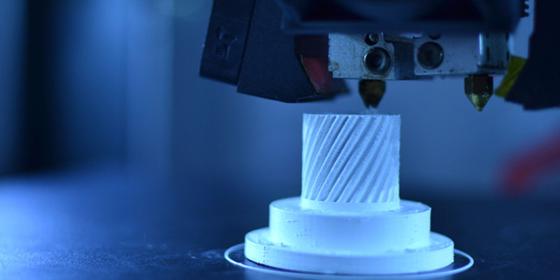
1. 3D Printing Process
3D printing surface finish varies drastically between different 3D printing techniques. FDM, for example, is prone to issues like low surface resolution and warping owing to its layer-by-layer deposition process. Powder-based methods like SLS 3d printing understandably produce a grainy surface finish as the parts are made from powder particles.
2. 3D Printer Parameters
3D printing parameters play a significant role in the final surface finish. For instance, the lower the layer thickness (or resolution), the smoother the surface looks. The printing speed, curing process, and infill are also important contributing factors to surface quality.
3. 3D Printing Material
3D printing materials have different properties and are compatible with different methods. Variations in surface finish can also be because of material limitations and properties.
4. 3D Printer Quality
The build and condition of 3D printers also affect the surface finish. Low-cost printers cannot produce parts with high surface quality. Likewise, an old, poorly maintained 3D printer loses its accuracy over time as well. Factors that contribute to this include condition of the rails and motors of the 3D printer, frame/base alignment, controller capabilities, condition of the power source, etc.
The chart below compares the 3D printing surface finish capabilities of the popular 3D printing process.
| 3D Printing Process | Surface Roughness (Ra) |
| FDM/FFF | 10 |
| SLD/DLP | 3 |
| SLS | 13 |
| PBF | 15 |
How to Measure 3D Printing Surface Finish?
3D printing surface finish measurement is performed by a profilometer. It is highly sensitive equipment with a sharp, pointed probe/stylus that ‘scans’ the surface by sliding across a portion of it.
During this sampling, the nose of the stylus records the exact shape of the surface, which is then used to calculate the surface roughness value (the quantitative equivalent of surface finish).
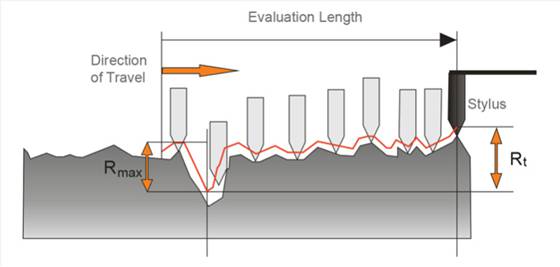
The most common measure for evaluating surface roughness is the Ra value. This value is simply the arithmetic mean (average) of all measurements. This can be better understood from the figure below.
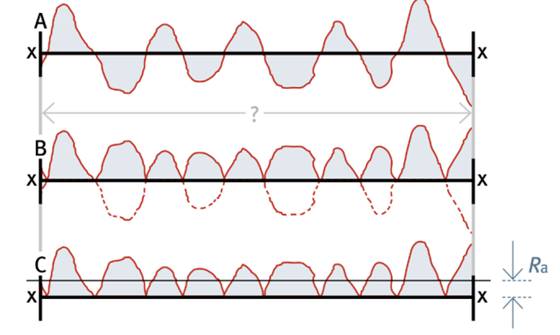
Common Methods to Improve 3D Printing Part Finish
We have thoroughly gone over various aspects of 3D printing surface finish. Now, we will move on to the numerous methods engineers use for finishing 3D printing parts.
These techniques vary significantly in terms of effectiveness, costs, skill requirements, and overall methodology. We discuss some of the most important of these options below.
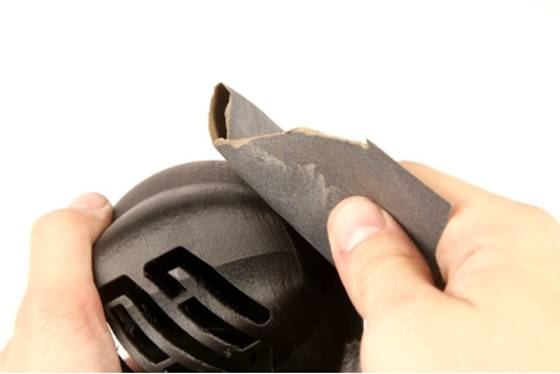
1. Sanding
Sanding is the most common method for 3D printing finishing. It is a simple process where rough, abrasive sandpaper is rubbed against the part’s surface to smoothen it. Imperfect features on the surface, such as protrusions and sharp corners, either break off or are flattened from friction during this process.
It is a very handy technique as it is very intuitive, cheap, effective, and works on most materials. Sandpaper comes in various grades that differ in grit size. Coarse grades have larger grits and remove more material but leave a rougher surface at the same time.
Usually, the sanding process begins by using coarse grades and gradually transitioning to finer grades as the surface becomes smoother.
However, one must be careful with sanding, however, as it is quite easy to remove extra material and ruin the part. Therefore, it is also a time-consuming process and may not be suitable for a high-productivity job.
The final 3D printing surface finish is not shiny smooth. Rather, it has a matte finish. To improve the surface quality further, one may use polishing cloths, extra-fine sandpapers, or painting/coating.
2. Machining/Grinding
Although 3D printing and CNC machining are often presented as opposing manufacturing technologies, pitted against each other for industry dominance, there are several avenues where they complement each other. One of these hybrid applications is finishing 3D printing parts.
Many 3D printing methods are incapable of achieving the fine surface finish of subtractive processes like machining and grinding.
Thus, a finishing cycle of machining/grinding is very common after 3D printing. It is highly effective when maintaining tight tolerances and exceptionally smooth surfaces. Moreover, machining is a versatile tool that is useful in hard-to-reach areas like inside holes or curved features.
What’s more, It is compatible with most 3D printing materials, both plastic-based and metal.
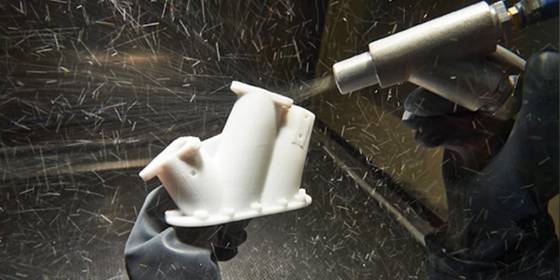
3. Bead Blasting
Bead blasting is another popular abrasive 3D printing finishing technique. As the name suggests, it involves blasting small plastic or glass beads on the rough surface. The impact causes surface imperfections to flatten out.
It is a quick method compared to sanding. Additionally, the beads can also be directed into hard-to-reach features and smoothen internal surfaces, which are not as accessible with handheld sandpaper.
Usually, the blasting starts at a low pressure to judge the abrasion rate. This is necessary as extra pressure can remove extra material or damage the surface. With proper visual inspection and experience, the operator may then increase the blasting pressure to optimize the 3D printing surface finish.
In addition, there are various other similar processes like sandblasting, shot peening, and water blasting as well with minor differences between each other.
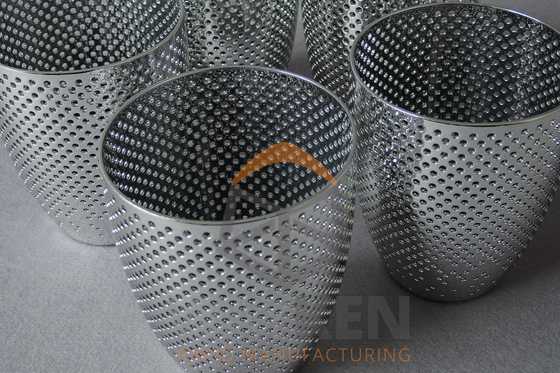
4. Plating
Plating (electroplating) is the process of electrically applying a thin metallic coat on a plastic or metal surface. It is a common practice for finishing 3D printing parts due to its wide-ranging benefits and convenience.
In most cases, plating enhances various material properties of the part. Plastic 3D printed parts are understandably weak and prone to breakage. Plating them with an appropriate metal can boost their durability, wear resistance, and give them the ability to withstand higher temperatures.
In addition, for metallic parts, electroplating can induce various useful properties such as corrosion and oxidation resistance, solderability, and electrical conductivity.
Apart from such functional purposes, plating serves as a great way to enhance the aesthetics of a 3D printing surface finish. Metallic coatings like gold, silver, and chrome add superior aesthetic appeal to parts.
5. Painting
Painting is a straightforward and well-understood process. It serves the same purpose as it would in any other place: a better appearance. This is because, with paint, users have the option of choosing virtually any color and look.
In common, the painting process is preceded by a coat of primer and putty. This smoothens the surface slightly by filling in gaps and valleys to some extent and preparing the surface better for a coat (or coats) of paint.
Furthermore, painting does serve the practical purpose of sealing to a certain extent as well. Although it is not a sealant, in the full sense of the word, it can act like it in a secondary role. With the issue of porosity prevalent in 3D printing, this is a beneficial effect.
Get Started 3D Printing Services at WayKen
If you’re looking for high-quality 3D printing parts and surface finishing services, WayKen is here for you. Our team of experts knows the proper methods involved in achieving exacting surface finish standards. What’s more, we offer 100% part inspection reports so you can be confident of the products you’ll get.
We also offer a range of machining processes, including CNC machining services, milling, turning, rapid injection molding, etc. We specialize in rapid prototyping and manufacturing and assist our customers throughout the process of their product development. Feel free to contact us today and let’s bring your design to life.
Conclusion
It is time to conclude this article. It is meant to be a comprehensive guide to 3D printing surface finish and we hope that it delivered useful information. However, it is a huge topic that is constantly evolving with 3D printing more and more every day.
In addition, if you have any further queries about 3D printing finishing, you may refer to the FAQs section below or contact our experts for consultancy.
FAQs
Which 3d printing surface finish method is the best?
It depends completely on the application. This is because each method has its pros and cons and is suitable for a specific class of products. If your only concern is aesthetics, painting or coating is your best option. If your product has functional needs like electrical conductivity, for example, you may consider an appropriate material to electroplate.
Does 3d printing have a better finish than CNC?
Generally, CNC machining takes the edge over 3D Printing in terms of surface roughness. However, with the proper surface finishing techniques and printer/method selection, this gap can be decreased significantly.

